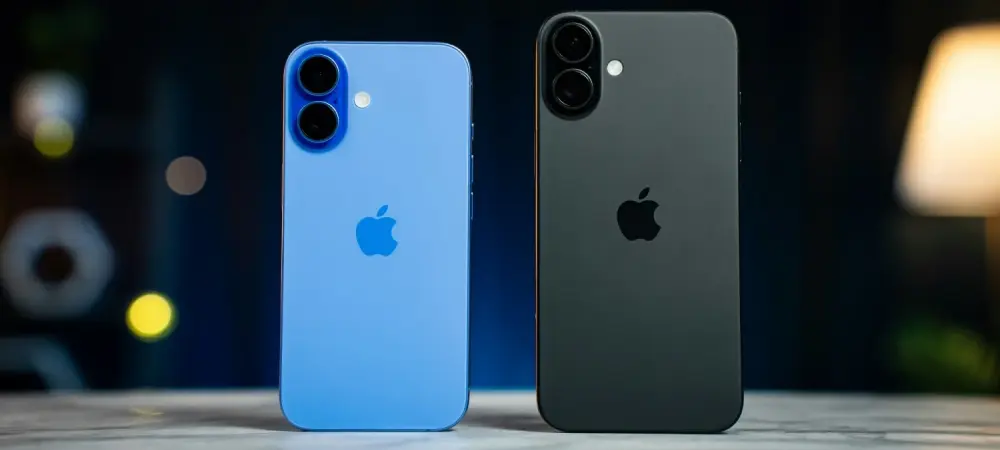In Q1 2025, Apple captured the spotlight in the smartphone industry with the iPhone 16 clinching the title of the global best-seller, marking Apple’s triumphant return atop the sales leaderboard after a hiatus. According to Counterpoint Research, this achievement is a testament to Apple’s sustained influence and strategic prowess, showcasing its ability to cater to consumer demands effectively despite competitive pressures. The iPhone 16 lineup took five places in the top 10 best-selling smartphone models, illustrating Apple’s comprehensive grasp across various market segments. Particularly notable were the iPhone 16 Pro Max and iPhone 16 Pro, which secured second and third places, collectively constituting a significant portion of Apple’s sales. This remarkable performance underscores the brand’s adeptness in maintaining its premium positioning alongside adaptable product offerings, which continue to draw a loyal customer base even amidst fierce competition from other tech giants.
Market Dynamics and Strategic Shifts
Despite Apple’s dominance, market dynamics revealed complex challenges, notably with governmental interventions and competitive entries from China. China’s governmental subsidies resulted in a heightened competitive landscape for the iPhone 16 Pro series, fostering a battleground where Huawei and Xiaomi emerged as formidable challengers. Nevertheless, Apple’s strategic pricing and innovation across its lineup allowed models like the iPhone 16e and iPhone 16 Plus to capture additional spots in the top 10 list. These models showcased Apple’s nimbleness in responding to different consumer price points and preferences. On the other hand, Samsung maintained its stronghold with a strategic mix of premium and budget offerings through its Galaxy series. The Galaxy S25 Ultra, though suffering from a shortened sales window, managed to secure the seventh position, emphasizing Samsung’s sustained appeal. Concurrently, the budget-friendly Galaxy A16 5G climbed impressively to fifth place, driven by its broad market penetration and affordability across a diverse consumer base.
Competitive Insights and Global Trends
Xiaomi further demonstrated its strong foothold with the Redmi 14C, which was the sole non-Apple or Samsung model featured in the top 10. This model’s success reflects Xiaomi’s strategic focus on emerging markets, such as the Middle East, Africa, and Latin America, where it continues to expand its influence. The ongoing trend toward high-end devices with broad appeal has seen manufacturers like Apple and Samsung focusing increasingly on premium innovations while ensuring a diverse lineup to cater to varied consumer needs. Concerns over tariff tensions and market uncertainties have not derailed the momentum, as strategic brand positioning across different price segments ensures stability. Manufacturers are leveraging advanced features and refined aesthetics to captivate audiences, paving the way for continued dominance in the coming months. As a result, the top 10 best-selling smartphones are expected to maintain a significant share of the market, highlighting brands’ agility in adapting to shifting consumer dynamics and fostering innovation within the premium segment.
Future Considerations in a Dynamic Landscape
Despite Apple’s strong market presence, they face complex challenges from government actions and new competition, especially from China. Chinese government subsidies have intensified competition for the iPhone 16 Pro series, with Huawei and Xiaomi rising as significant contenders. Yet, Apple’s clever pricing strategies and innovation with models like the iPhone 16e and 16 Plus allowed them to gain traction in the top 10 list. These models reflect Apple’s adaptability in meeting various consumer demands for price and features. Simultaneously, Samsung maintained a secure position with a blend of high-end and budget-friendly options in its Galaxy line. The Galaxy S25 Ultra, despite a shorter sales timeline, still managed to grab the seventh spot, showcasing Samsung’s enduring popularity. At the same time, the affordable Galaxy A16 5G impressively reached fifth place, benefiting from its wide market appeal and competitiveness in terms of price. The tech market remains dynamic with these ongoing shifts and strategies.

